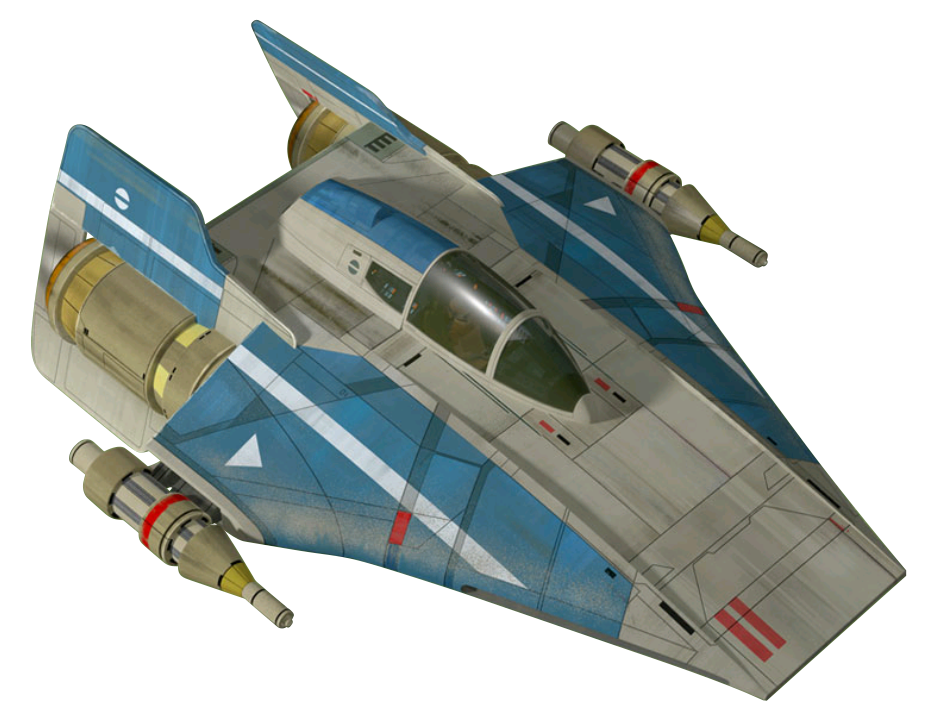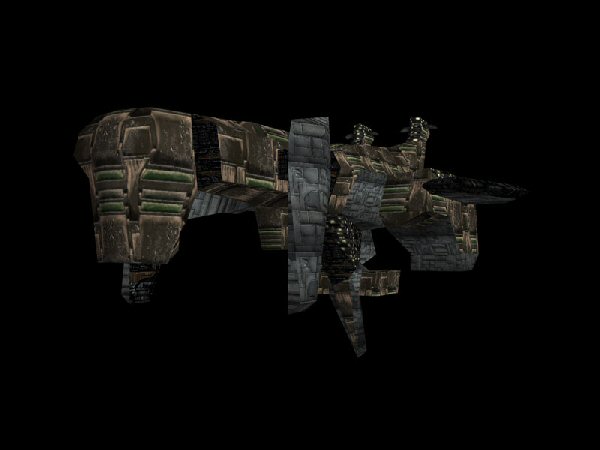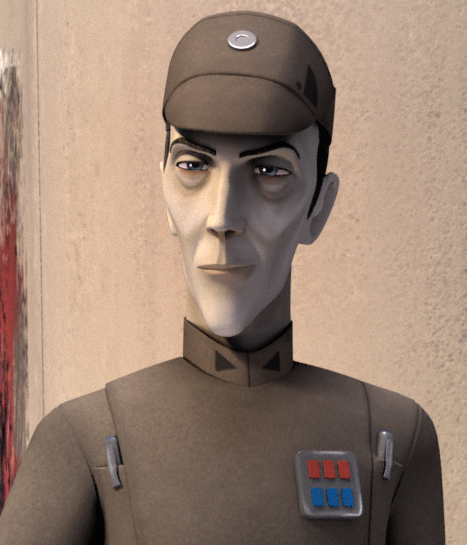|
Depends on your perspective. I consider 8 to be pretty fast, especially compared to stock ships sold to civilians, before being modified and upgraded. I also consider ships with speeds of 10-12 to be pretty rare. As for perspective, I'll go ahead and explain my perspective here, so you understand my thought process on the whole thing, but this may get lengthy, and I'm going to make references to real life cars for comparisons....
The Millennium Falcon has a space speed of 8. But the stock YT-1300 has a space speed of 4 (if that's incorrect, please feel free to give me a source to go check). The stock ship is like the standard civilian car a person would buy in real life with a average decent speed. But the Falcon is like if that stock car were in the possession of a mechanic who loves improving those cars to perform better, go faster, take turns tighter....improving every aspect of that car as much as possible. But in the end, it's only a stock car. You can only do so much with it, and it's not like having a more expensive performance car, available to civilians but with ridiculously high price tags that restrict them to the wealthy (like a lamborghini was back in the 1980s/1990s, or whatever the rich man's fast car is now, maybe a Koenigsegg or Lamborghini Reventon). And that fast car isn't going to be nearly as fast as a car built dedicated solely to nothing but racing and/or speed, like an F1 formula racing car, and the like.
The way I looked at A-Wings in relation to other starfighters for the longest time, since around 2000-2001, was as starfighter scale racing craft built solely for speed and nothing else. And since they were heavily modified from some other form, me and my gaming group often tended to rationalize that this is how they started before the Rebel Alliance got their hands on them. At the time, we didn't have a confirmed info source for the in-depth history and background behind A-Wings. Just what was in the game books. The internet wasn't like it is now, and it was several more years before I realized just how trustworthy Wookiepedia is due to the faithfulness of its community (If you disagree, that's fine, but it's still better than every other franchise-inspired wiki out there, except maybe Star Trek's Memory Alpha).
So, bringing all this together.....
For me, civilian space speeds are between 1-6, and military speeds tend to be 4-10, with 11-12 being rare exceptions. 1-2 is slow (like the Smoking Blaster, a slow starter group ship from the Gamemaster's Guide, but obviously meant to be improved and upgraded over time); 3 is about middle, what civilians and slow transports not worried about schedules would use to get around the galaxy; 4 is decent, slightly better than middle speed, a stock cheap civilian car with good speed; 5-6 is the high end of the cheaper civilian cars/starships that can be purchased as-is. Beyond this, you start getting into after-market modifications and upgrades, taking the stock civilian cars and boosting them to do better. For me, that would reach up to/around space speed 8. Then you've got the "lamborghinis", the civilian fast cars that cost a lot. For me, these would "start" around space speed 6, easily reach 8, and possibly get up to 10 (if applied as some kind of personal ship in Star Wars, the owner would probably need some special permit to own and fly such a ship, but if they're wealthy, this won't be a problem). And finally, you have the cars/starships that can reach beyond this, because they are purpose-built for speed, probably cost more than the "lamborghinis", especially when it comes to maintenance (formula 1 race cars) or other things like needing entirely different fuels and such. This is where you get the standard TIE/LN which can reach space 10 (which is purpose built to be as fast as possible, but as cheap as possible for mass-production, therefor as physically weak and low-powered as possible, but all-in-all still extremely fast) and the A-Wing that reaches space 12 (this is the formula 1 race car of Star Wars starfighters, fastest one of its time, but not nearly as weak as a TIE/LN, has more durability, and some decent bite to it).
I also mentioned military ships. Military ships, especially starfighters with offensive weapons and defensive shields and other countermeasures, would require permits or some other form of allowance, such as being a member of the military. Military starfighters, transports, etc, could have slower speeds, but might make up for this with stronger weapons, hull, shields, etc. Usually, whatever the common military ships are, they are meant to be able to run down whatever the common criminal ships are of the era of time, or in their area of operation. So if the criminals have ships with speed 3, speed 4 ships would work just fine. They have speed 5? Fine, military has speed 6. And so on, and so forth. Escalation. TIE/LN fighters are speed 10, and every starfighter before and during their time seems to stick around speeds of 5-8 (Headhunters and Y-Wings were space speed 7). I chalk this up to the Rebel Alliance using whatever they could get their hands on, often cast-offs from both sides of the Clone Wars, or periods immediately before or afterwards. The Rebels didn't start modifying ships, like the R-22 Spearheads, to be as fast as they are until there wasn't much choice left for them, and they really needed them. Which goes back to escalation, as the Empire introduced the TIE Interceptors, which weren't superior, but could still hold their own against the A-Wings.
OK, to sum all this up. I gave the R-22 Spearhead a space speed of 8, because I saw this as a pretty darn fast speed for a ship from during, or just after, the Clone Wars. I could see the Aethersprite having speeds of 6-8, making it very fast for its time, and being somewhat nimble, but all in all being weaker in hull, shields (if it had any), weapons (again, if it had any), due to it relying heavily on being designed for a Jedi to make up for any design slacks with their Jedi abilities. The R-22 Spearhead maintains that speed, while gaining what's needed to non-Force users to use the fighter, and hold their own, if not win in a battle. Also, and more importantly here, the R-22 Spearheads shown in Star Wars Rebels often were overrun and taken out by TIE/LN fighters. Because the TIEs were faster, and maybe also more nimble and maneuverable (R-22 Spearhead may need to have Maneuverability reduced). This constant loss of R-22 Spearheads during SWRebels would have been what spurred the Rebel Alliance to make the RZ-1 A-Wings, to have a solid counter to TIE/LNs, as well as any other fighter the Empire had to throw against them at the time. Y-Wings were the workhorse the Rebels had in abundance. R-22s were used a lot before they got the Y-Wings. Then the X-Wing came along, more rare, but more balanced, and very much able to hold its own against TIE/LNs, making up for lack of speed with improvements everywhere else, which the R-22 just couldn't do. Then you get the B-Wings with overwhelming firepower, and the A-Wings with overwhelming speed.
When you fit the R-22 Spearhead in a timeline (Star Wars Rebels), and consider escalation along that timeline, it having weaknesses starts to fit quite well.
[NOTE worth mention on the Smoking Blaster, a ship from the D6 GM's Guide, crappy ship, but a nice fixer-upper with lots of potential that will get you where you need to go, and a lot of detailed text that does a better job painting a picture of the ship in your imagination than any of the pics in the book ever did]
|












